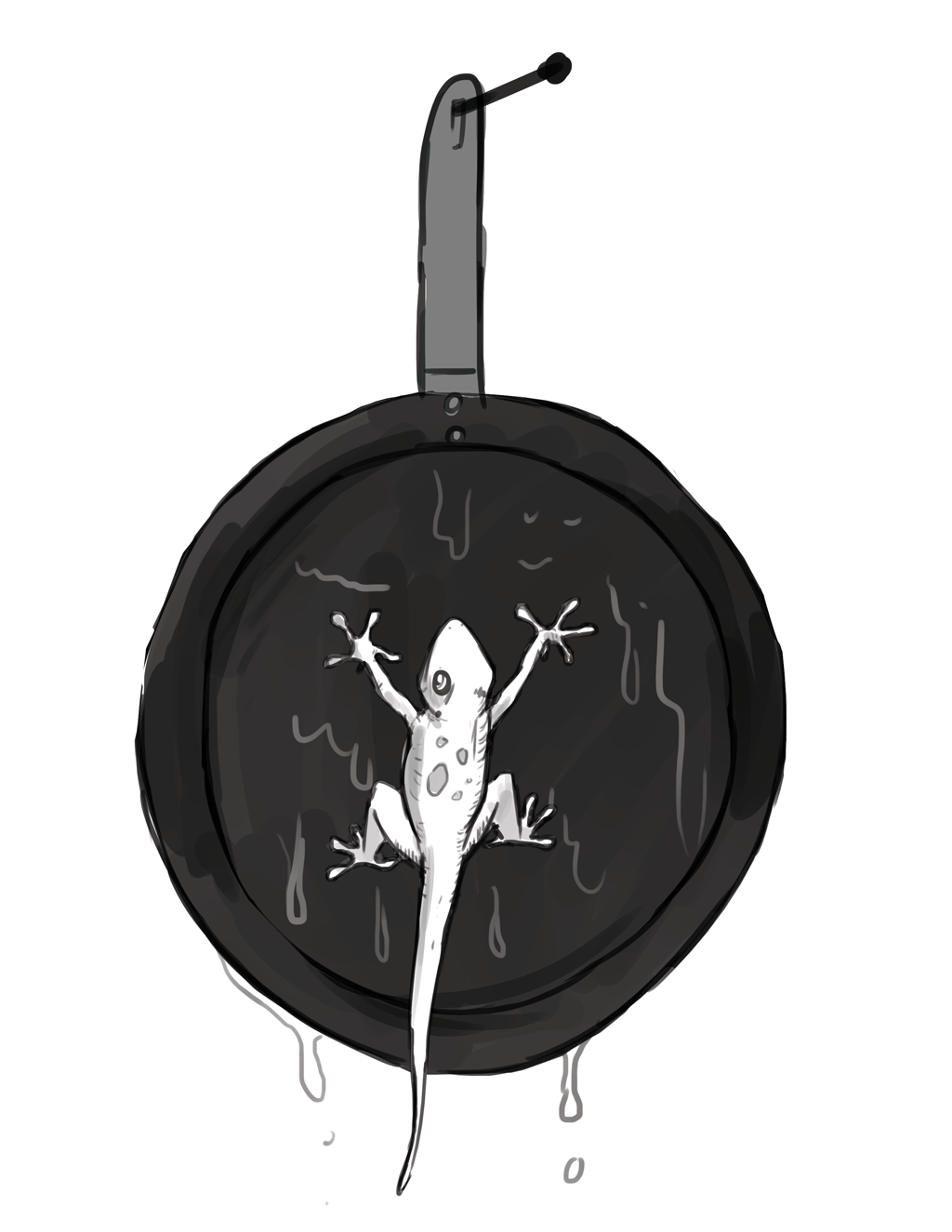By Jess Wind (The Cascade) – Email
Print Edition: May 7, 2014

We know geckos are sticky; they can cling to glass surfaces and scale ceilings. We know a Teflon frying pan is not, having revolutionized the art of the perfect breakfast.
What happens when they come into contact with each other?
It is this kind of question, and many others like it, that have kept researchers at the University of Akron (UA) busy for years.
When the lizards tried to stick to Teflon material, they had trouble, meaning the material really stands up to its non-stick name. Then one inquisitive undergraduate student asked what would happen if the Teflon was underwater.
Alyssa Stark, a doctoral candidate in UA’s bioscience program released a study in 2012 that tested a gecko’s ability to stick to different surfaces. They lose their adhesion on glass, but remain stuck to waxy leaves in their natural environment thanks to the science of wettability. Glass has high wettability, which leads to a film forming between the surface and the gecko’s feet, impeding adhesion.
Stark told the Akron Beach Journal she didn’t have an answer for the undergraduate student’s question.
“I also didn’t think the results would be all that interesting. If they don’t stick in air why should they stick in water?” she said. But they ran the study and were surprised when the little lizards remained stuck to the non-stick surface when wet.
“There is an important moral to this story,” Stark said. “Always listen to your students.”
The secret to the gecko’s stickiness is their feet. They have tiny hairs on the pads of their feet that allow them to cling to surfaces.
“They have hairy toes — much like bristles — with thousands of them in one square millimeter, tipped with something called a spatula, so tiny that it is not much larger than the wavelength of visible light,” wrote Jim Carney in the Akron Beach Journal.
Think Spider-Man with less radioactive spider venom.
Stark, along with her research team, is working on a paper to come out in a few months detailing the discovery.
It means big things for researchers focused on adhesive materials like, Dr. Ali Dhinojwala, who is working with the geckos. One of the biggest challenges, he explained, is finding materials that stick, but also release. Duct tape is manufactured to stick forever. With that comes the search for materials that stick to wet surfaces.
“Ninety per cent of the time I get calls from companies and organizations to help me design material which would stick in water,” said Dr. Ali Dhinojwala, one of the lead researchers focused on adhesive materials.
Biology professor Dr. Peter Niewiarowski, another researcher working with the geckos noted that as they discover more things about the gecko’s unique abilities, the possibilities for sticky technology are endless.
“I think we really still don’t understand how geckos deal with wet environments and remain sticky,” he said. “We don’t know if they avoid wet surfaces or avoid being active when surfaces are wet or if they have some other tricks.”

